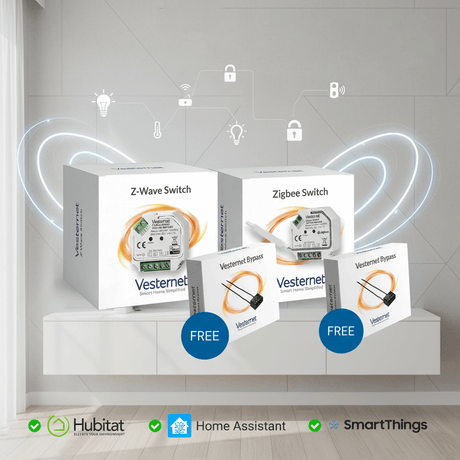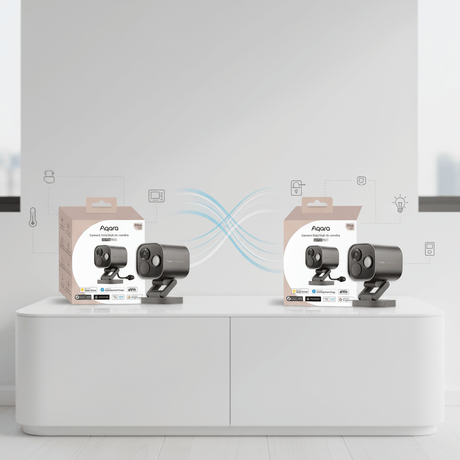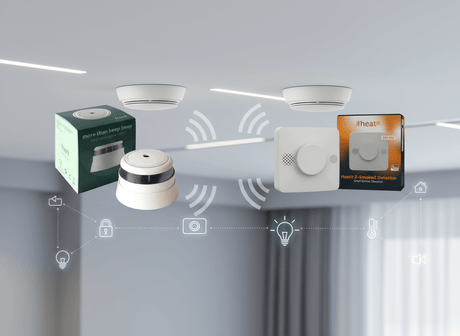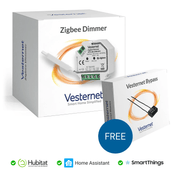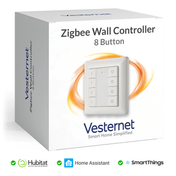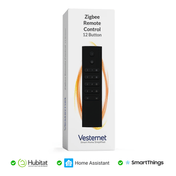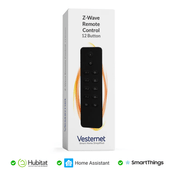Commercial buildings today face unprecedented pressure to optimise operational efficiency while reducing costs and environmental impact. A smart building management system represents the cornerstone of modern facility management, enabling organisations to achieve substantial energy savings, improve occupant comfort, and streamline maintenance operations through intelligent automation technologies.
Smart building sensors form the nervous system of effective commercial automation systems, providing the real-time data that drives intelligent decision-making across all building operations. These sophisticated monitoring devices enable predictive maintenance protocols, automated environmental controls, and comprehensive energy management strategies that deliver measurable returns on investment whilst supporting sustainability initiatives.
This comprehensive guide will equip facility managers, building owners, and automation professionals with the knowledge needed to successfully implement smart buildings technology. From initial needs assessment through strategic sensor deployment and long-term optimisation, readers will discover proven methodologies for transforming traditional commercial spaces into intelligent, responsive environments that adapt automatically to operational demands.
Understanding Commercial Building Automation Fundamentals
Modern smart building management systems integrate multiple technological components to create intelligent environments that respond automatically to changing conditions. These systems combine advanced sensors, programmable controllers, and cloud-based software platforms to monitor, analyse, and control everything from lighting and climate to security and energy consumption.
Core components of effective building automation:
- Distributed sensor networks that monitor environmental conditions, occupancy, and system performance
- Centralised controllers that process sensor data and execute automated responses
- Integration platforms that connect disparate building systems under unified management
- User interfaces that provide real-time visibility and manual override capabilities

The fundamental principle behind smart buildings technology lies in creating feedback loops that enable buildings to learn from occupancy patterns, environmental changes, and operational demands. This intelligence allows facilities to automatically adjust heating, cooling, lighting, and ventilation systems to maintain optimal conditions whilst minimising energy waste and operational costs.
Essential Smart Sensor Categories for Commercial Buildings
Smart building sensors encompass a diverse range of monitoring technologies, each designed to capture specific environmental or operational data. Temperature and humidity sensors provide the foundation for climate control systems, enabling precise HVAC management that responds to both indoor conditions and external weather patterns.
Critical sensor types for comprehensive building monitoring:
- Motion and occupancy sensors that enable automated lighting and climate adjustments
- Energy monitoring sensors that track consumption across different systems and zones
- Air quality sensors measuring CO2, particulates, and volatile organic compounds
- Water leak detection sensors protecting against costly damage and system failures
- Safety sensors including smoke detectors and emergency monitoring systems

Each sensor category contributes essential data to the overall building intelligence network, enabling commercial automation systems to make informed decisions about resource allocation, maintenance scheduling, and operational adjustments. The synergy between different sensor types creates comprehensive situational awareness that traditional building management approaches cannot match.
Strategic Planning for Smart Building Implementation
Successful smart building deployment begins with thorough assessment of existing infrastructure, operational priorities, and business objectives. This evaluation process identifies the most impactful automation opportunities whilst ensuring new technologies integrate seamlessly with current building systems and workflows.
Essential planning considerations for building automation projects:
- Comprehensive audit of current building systems and energy consumption patterns
- Identification of high-impact automation opportunities based on operational costs
- Phased implementation strategy that delivers immediate benefits whilst building toward comprehensive coverage
- Integration requirements assessment for existing HVAC, lighting, and security systems

The most effective approach involves developing a multi-year roadmap that prioritises quick wins alongside long-term transformation goals. This methodology enables organisations to demonstrate early return on investment whilst systematically building the sensor infrastructure necessary for advanced building management efficiency improvements.
Sensor Deployment Best Practices and Installation Guidelines
Optimal sensor placement requires careful consideration of building zones, occupancy patterns, and environmental characteristics. Strategic deployment ensures comprehensive coverage whilst avoiding redundant installations that increase costs without delivering proportional benefits.
Key factors influencing sensor placement decisions:
- Zone-based deployment that aligns with HVAC systems and occupancy patterns
- Network architecture planning to ensure reliable data transmission and system redundancy
- Wireless versus wired connectivity decisions based on building infrastructure and maintenance requirements
- Integration points with existing building management systems and communication protocols
Professional installation requires understanding of both technical requirements and operational workflows to ensure sensors provide accurate data without interfering with daily building activities. The deployment strategy should account for future expansion possibilities and changing building usage patterns.
Integration with Building Management Systems and Protocols
Seamless integration between smart building sensors and existing infrastructure represents the cornerstone of successful commercial automation systems. Modern sensor networks must communicate effectively with legacy systems whilst providing pathways for future technology upgrades and expansion.
Critical integration components for effective system performance:
- Protocol compatibility ensuring sensors communicate with existing building controllers
- Data management platforms that aggregate information from multiple sensor types
- Real-time monitoring dashboards providing actionable insights for facility management teams
- Automated response configurations that trigger appropriate system adjustments based on sensor inputs
The integration process requires careful coordination between different building systems to avoid conflicts and ensure reliable operation. A well-implemented smart building management system creates a unified platform where facility managers can monitor and control all building operations from a centralised interface.
Maximizing Energy Efficiency and Operational Savings
Smart buildings technology delivers substantial operational improvements through automated optimisation of energy consumption, maintenance scheduling, and resource allocation. These systems continuously analyse building performance data to identify efficiency opportunities and implement automatic adjustments that reduce costs without compromising occupant comfort.
Primary areas where sensor networks drive operational savings:
- Predictive maintenance protocols that prevent costly equipment failures and extend system lifecycles
- Automated HVAC optimisation based on occupancy patterns and environmental conditions
- Intelligent lighting control systems that adjust illumination levels based on natural light and occupancy
- Energy consumption monitoring that identifies waste and enables targeted efficiency improvements

The cumulative impact of these optimisations typically delivers energy savings of 20-30% compared to traditional building management approaches. Building management efficiency improvements extend beyond energy costs to include reduced maintenance expenses, improved system reliability, and enhanced occupant productivity through optimal environmental conditions.
Advanced Automation Features and Future-Proofing Strategies
Modern smart building management systems incorporate sophisticated analytics and machine learning capabilities that enable increasingly intelligent responses to building conditions and usage patterns. These advanced features transform reactive maintenance approaches into proactive optimisation strategies that continuously improve building performance.
Emerging automation capabilities enhancing building intelligence:
- Occupancy-based environmental controls that adjust systems before spaces are occupied
- Predictive analytics for equipment maintenance based on performance trends and usage patterns
- Integration with renewable energy systems to optimise consumption and storage strategies
- Scalable sensor networks that adapt to changing building uses and expansion requirements
Future-proofing strategies ensure that current sensor investments remain valuable as technology evolves and building requirements change. The most effective smart buildings technology implementations provide flexible platforms that accommodate new sensor types, communication protocols, and analytical capabilities as they become available.
Troubleshooting and Maintenance for Long-Term Success
Maintaining optimal performance in commercial automation systems requires systematic monitoring, preventive maintenance protocols, and rapid response capabilities for addressing technical issues. Regular system evaluation ensures sensors continue providing accurate data and automated responses function as intended.
Essential maintenance practices for reliable smart building operation:
- Scheduled sensor calibration and cleaning to maintain measurement accuracy
- Network performance monitoring to identify communication issues before they impact system function
- Software updates and security patches to protect against vulnerabilities and improve functionality
- Performance benchmarking to track system efficiency and identify optimisation opportunities
Effective troubleshooting procedures enable facility management teams to quickly identify and resolve issues that could impact building operations or occupant comfort. Comprehensive maintenance protocols extend system lifecycles and ensure continued return on smart building sensor investments.
Conclusion
Smart building management systems represent a transformative approach to commercial facility management, delivering proven benefits through reduced operational costs, enhanced energy efficiency, and improved occupant experiences. The strategic integration of smart building sensors creates intelligent environments that automatically adapt to changing conditions whilst providing facility managers with unprecedented visibility into building performance and optimisation opportunities.
Beginning your smart buildings technology journey requires careful planning and systematic implementation, but the long-term benefits justify the initial investment through sustained operational improvements and competitive advantages. Professional-grade sensor technologies can be deployed incrementally to achieve immediate improvements whilst building the foundation for comprehensive building automation that evolves with your organisation's needs.
Ready to explore smart building sensor solutions for your commercial property? Vesternet's extensive collection of professional-grade sensors offers the foundation for effective building automation, with expert guidance available to help you select the right technologies for temperature monitoring, occupancy detection, energy management, air quality control, safety systems, and water protection to create an intelligent, efficient building environment.


